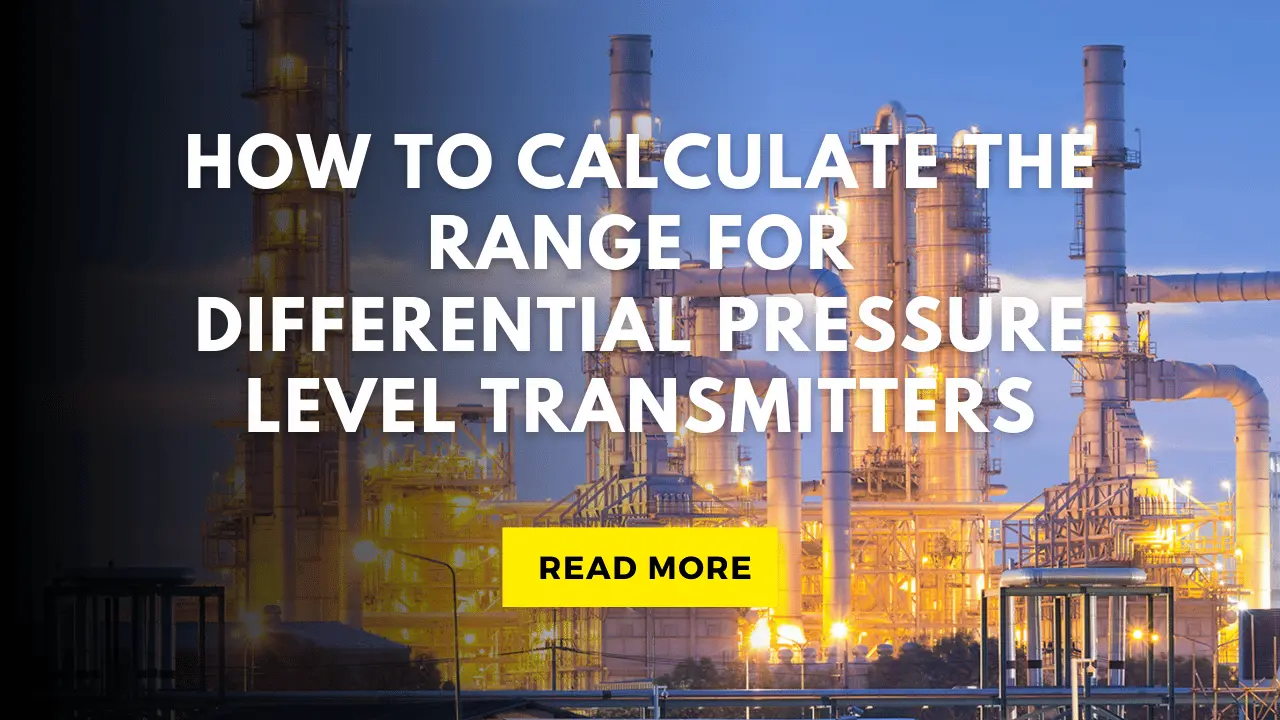Differential Pressure level Transmitters are widely used in industrial applications for measuring fluid levels in tanks, silos, and containers. This method is efficient and reliable, providing accurate readings based on the pressure difference between two points. The measured pressure difference corresponds to the height of the fluid in the container.
Table of Contents
ToggleComponents of a Differential Pressure Level Measurement System
A typical Differential Pressure level measurement setup consists of:
- Differential Pressure Transmitter: Measures the pressure difference and converts it into a level reading.
- Diaphragm Seal: Installed on the top or bottom of the container to isolate the transmitter from the process fluid.
- Capillary Tube: Filled with a known-density fluid, transmitting pressure from the diaphragm to the transmitter.
Factors Influencing Measurement Accuracy
Several factors affect the accuracy of DP level measurement:
- Density of the Fill Fluid: Ensure the density is known and remains constant.
- Capillary Tube Length: Longer tubes can introduce errors due to temperature changes.
- Temperature Variations: These can affect fluid density and pressure readings.
Proper calibration is required to minimize errors and achieve accurate level measurements.
Simplified Differential Pressure Level Calculation: Wet-Leg Measurement
In this example, we calculate the calibrated range of a DP transmitter for a wet-leg setup. A wet leg refers to the condition where the capillary tube is filled with a liquid to maintain pressure continuity.
Process Data:
- Process Fluid Density (ρ1): 0.96 g/cm³
- Fill Fluid Density (ρ2): 0.96 g/cm³
- Wet Leg Height (H): 1.0 m (1000 mm)
- Distance Between Transmitter and High-Pressure (HP) Tapping Point (h): 0.2 m (200 mm)
- Tank Height (L): 0.7 m (700 mm)
Step-by-Step Calculations
1) Calculate ΔP at 0% Level (4 mA Output)
At 0% level, the fluid height in the tank is at its minimum.
Formula: ΔP = HP – LP
- High-Pressure (HP): HP = ρ₁ × h
HP = 0.96 × 200
HP = 192 mmH₂O - Low-Pressure (LP): LP = ρ₂ × H
LP = 0.96 × 1000
LP = 960 mmH₂O
Differential Pressure (ΔP):
ΔP = HP – LP
ΔP = 192 – 960
ΔP = -768 mmH₂O
2) Calculate ΔP at 100% Level (20 mA Output)
At 100% level, the tank is completely filled with fluid.
Formula:
ΔP = HP – LP
- High-Pressure (HP):
HP = ρ₁ × (L + h)
HP = 0.96 × 900
HP = 864 mmH₂O - Low-Pressure (LP):
LP = ρ₂ × H
LP = 0.96 × 1000
LP = 960 mmH₂O
Differential Pressure (ΔP):
ΔP = HP – LP
ΔP = 864 – 960
ΔP = -96 mmH₂O
3) Define the Transmitter Range
The calibrated range for the transmitter is set between the calculated ΔP values for 0% and 100% levels.
Range:
-768 mmH₂O (0%) to -96 mmH₂O (100%)
Final Notes
- Ensure the fill fluid and process fluid densities are accurately known and remain consistent during operation.
- Always compensate for temperature changes if the system operates in varying environmental conditions.
- Regularly calibrate the DP transmitter to maintain measurement accuracy.
By following these steps, you can reliably calculate and configure the range for differential pressure level transmitters, ensuring precise fluid level measurements in industrial applications.
I hope you like above blog. There is no cost associated in sharing the article in your social media. Thanks for reading!! Happy Learning!!

